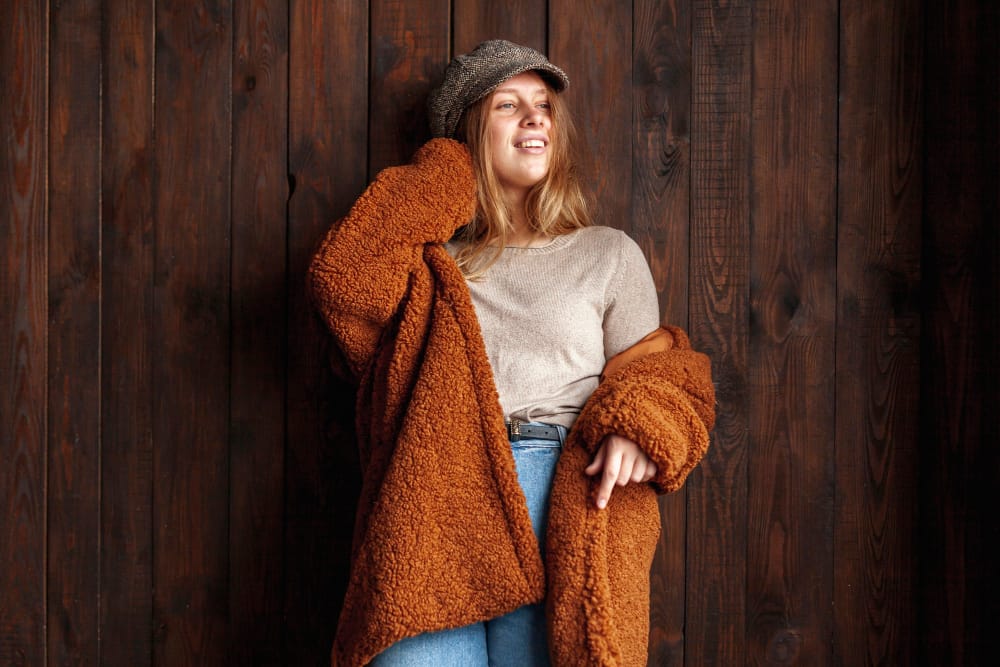Home » Wool
Cherishing the Comfort: A Look at Wool Fabrics
When it comes to staying warm and cosy during the colder months, wool fabrics have always been a go-to choice for many people. The natural fibre is cherished for its warmth and insulation properties, making it a staple in winter wardrobes around the world. In this post, we will take a closer look at the wonders of wool fabrics and why they are so beloved by many.

Understanding Wool: Origins and Types
Wool, a multifaceted fibre, traces its origins back to the domestication of sheep and other wool-producing animals, marking a significant chapter in human history. Its journey from fleece to fabric has been honed over millennia, with cultures around the globe perfecting the art of wool production. The diversity in wool types stems from the variety of animals it is sourced from, each contributing distinct qualities to the fabric produced. Merino wool, renowned for its softness and fine fibres, originates from Merino sheep, a breed that has become synonymous with quality wool production. Cashmere, another highly prized wool, is obtained from the undercoat of cashmere goats, offering unparalleled softness and warmth, albeit at a higher price point due to its scarcity and the intricate process of collection. Lambswool, harvested from a lamb’s first shearing, is celebrated for its softness, elasticity, and hypoallergenic properties, making it a favoured choice for sensitive skin.
The fibre’s versatility is further exemplified through the existence of other types such as Shetland wool, known for its durability and warmth, sourced from the Shetland Islands’ native sheep. Each type of wool brings with it unique attributes that dictate its end use, from luxurious garments to hardwearing, everyday apparel. This variety ensures that wool, in its many forms, continues to meet a broad spectrum of needs, from thermal insulation to tactile comfort, underpinning its enduring appeal across centuries. The exploration of wool’s origins and its diverse types highlights the intricate relationship between human ingenuity and the natural world, a testament to wool’s status as a timeless and versatile material.
Why Wool Wins: The Unique Properties of Wool Fabrics
The unparalleled characteristics of wool fabrics contribute significantly to their widespread acclaim and preference, especially in garments designed for comfort and resilience in the face of inclement weather. One of the most heralded qualities of wool is its remarkable insulation capability. This natural fibre has the inherent ability to retain warmth, ensuring an individual’s comfort during the chilliest of seasons. However, wool’s benefits extend beyond merely trapping heat; it is adept at managing moisture. Wool fibres can absorb and wick away moisture, up to one-third of their weight, without feeling damp. This attribute makes wool garments particularly appealing, as they help maintain a dry and comfortable environment against the skin.
Another notable feature of wool is its natural resistance to odours. This property stems from wool’s ability to efficiently manage moisture and allow the skin to breathe, thereby minimising the build-up of sweat and bacteria that can lead to unpleasant odours. Consequently, wool garments require less frequent washing, a bonus for both the environment and the fabric’s longevity.
Additionally, wool offers a level of UV protection uncommon in natural fabrics. This protection shields the wearer from harmful ultraviolet rays, adding another layer of utility to wool’s already impressive repertoire. Beyond its functional benefits, wool’s natural elasticity makes it resistant to wrinkles and ensures that garments maintain their shape and drape beautifully, enhancing their aesthetic appeal.
These unique properties of wool fabrics underscore their dominance in the realm of natural fibres, offering a blend of comfort, practicality, and style that is hard to match.

Sustainable and Stylish: The Environmental Benefits of Wool
Wool stands out not just for its comfort and style but also for its positive impact on the environment. As a naturally occurring fibre, it provides a sustainable alternative to synthetic materials, which often derive from non-renewable petroleum sources. The process of producing wool is inherently more eco-friendly, given its renewable nature. Sheep and other wool-bearing animals regrow their fleece annually, ensuring a consistent supply without depleting resources. This cycle of renewal plays a crucial role in sustainable fashion, offering a guilt-free choice for the environmentally conscious consumer.
Moreover, wool’s biodegradable qualities present a stark contrast to the persistent waste challenge posed by synthetic fibres. When disposed of, wool fabric decomposes in soil, releasing valuable nutrients back into the earth, thus completing a natural cycle that minimises environmental footprint. This attribute is increasingly significant in an age where textile waste poses a considerable ecological problem.
The environmental merits of wool extend to its low-impact care requirements. The natural resilience and odour resistance of wool fibres mean that garments require less frequent washing, reducing water usage and the need for harsh detergents, which can be detrimental to aquatic ecosystems. Furthermore, the durability of wool items translates to a longer lifespan, diminishing the need for frequent replacements and, consequently, lowering overall consumption and waste.
Embracing wool is a stylish statement that goes hand in hand with a commitment to environmental stewardship. Its unique combination of sustainability, functionality, and aesthetic appeal positions wool as a premier choice for those looking to make environmentally responsible fashion choices.
Wool in Wardrobes: Fashion and Functionality Collide
The fusion of fashion and functionality in wool fabrics is evident in the vast array of wardrobe essentials and statement pieces alike. Wool’s versatility shines through in the fashion world, where it adapts effortlessly to both timeless and contemporary styles. Classic wool coats, renowned for their enduring appeal and protective warmth, offer elegance and practicality in equal measure. Meanwhile, wool jumpers, a staple in any winter wardrobe, provide snug warmth and can be found in an assortment of styles, from sleek fitted designs to chunky, cosy knits that epitomise comfort fashion.

Trendsetters and fashion aficionados alike turn to wool for its adaptability across seasons and occasions. Wool skirts and trousers, ranging from tailored cuts for a professional setting to relaxed fits for casual wear, underscore wool’s dexterity in meeting diverse sartorial needs. The fabric’s natural breathability and moisture-wicking properties ensure comfort and ease, making wool garments a preferred choice for both layered winter looks and lighter spring attire.
Innovations in wool fabric production have expanded its texture and pattern offerings, enriching the fashion landscape with materials that inspire creativity and individual expression. The tactile pleasure of wool, combined with its aesthetic versatility, makes it a beloved material among designers and consumers. Embracing wool in personal style not only elevates one’s fashion game but also aligns with a conscious choice towards sustainable and enduring wardrobe investments.
Wool at Home: Beyond Clothing
Wool’s appeal extends beyond the realm of apparel, marking its presence in the cosy corners of our homes. Its versatility and warmth breathe life into interior spaces, where woollen textiles serve not only as functional items but also as aesthetic enhancers. Among the plethora of home textiles, wool blankets and throws stand out, offering an extra layer of warmth on chilly evenings. These items invite a sense of comfort and relaxation, transforming any sofa or bed into a snug haven. Similarly, wool rugs underfoot add a touch of luxury and warmth, creating inviting spaces in living rooms, bedrooms, or study areas. Their durability and natural resistance to stains make them a practical choice for high-traffic areas, marrying style with functionality.
Furthermore, wool’s natural flame resistance enhances its suitability for home textiles, contributing an element of safety alongside comfort. Wool upholstery on furniture not only withstands daily wear and tear with grace but also brings an element of refined texture and warmth to interiors. Its ability to maintain appearance and resist pilling ensures that furniture retains its allure over time. As homeowners seek sustainable options to decorate their spaces, wool’s biodegradable and renewable nature positions it as an environmentally friendly choice for home textiles, aligning with the growing trend towards greener living spaces. Its natural beauty and practicality make wool a favoured material, weaving warmth and style into the fabric of everyday life.

Caring for Your Wool: Tips and Tricks
Maintaining the quality and longevity of your wool items requires attentive care. Whilst it’s essential to adhere to the guidelines provided on the garment’s care label, a few general practices can help preserve the natural beauty and durability of wool fabrics. Gentle hand washing in lukewarm water is advisable for many wool items, using a mild detergent specifically designed for wool. Refrain from aggressive rubbing or pulling during the cleaning process to maintain the integrity of the fibres. For items that are particularly delicate or prone to shape loss, dry cleaning is recommended as a safe alternative. After washing, rather than wringing out water, which can distort the fabric, press out the excess moisture between two towels.
Lay the garment flat on a clean, dry towel away from direct heat and sunlight to dry, shaping it back to its original form. This method helps in preventing shrinkage and ensures that your wool garments remain as inviting and luxurious as when first purchased. By following these simple yet effective care tips, your wool treasures will continue to offer warmth and style for seasons to come.